The Chickadee Birds: All About Chickadees
Updated: Feb. 21, 2024
To attract and identify the types of chickadees in North America, learn about chickadee songs, favorite foods and where they nest.
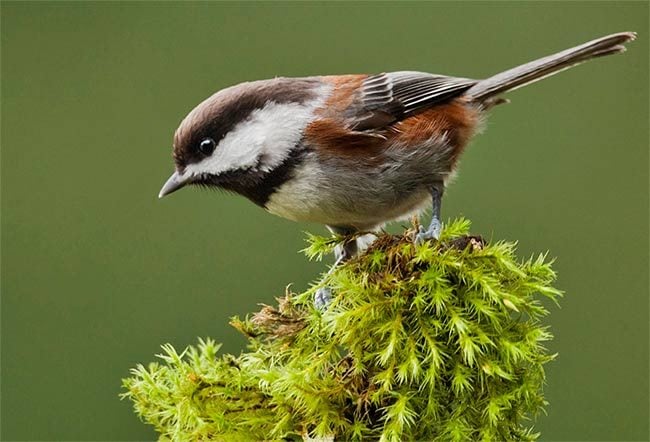
Watching chickadees flit through the treetops is like witnessing master acrobats at work. These adorable birds duck and dodge through branches as they hunt down small insects. Not only are these birds super cute, they also have friendly personalities. They are curious and unafraid of humans, and old-time birders call this classic chickadee trait “confiding.” Learn all about the chickadee birds.
Types of Chickadees in North America
There are seven different species of chickadees in the U.S. All of them have snazzy dark caps and black bibs.
- Black-capped chickadee
- Mountain chickadee
- Boreal chickadee
- Carolina chickadee
- Gray-headed chickadee
- Mexican chickadee
- Chestnut-backed chickadee
Black-Capped Chickadee
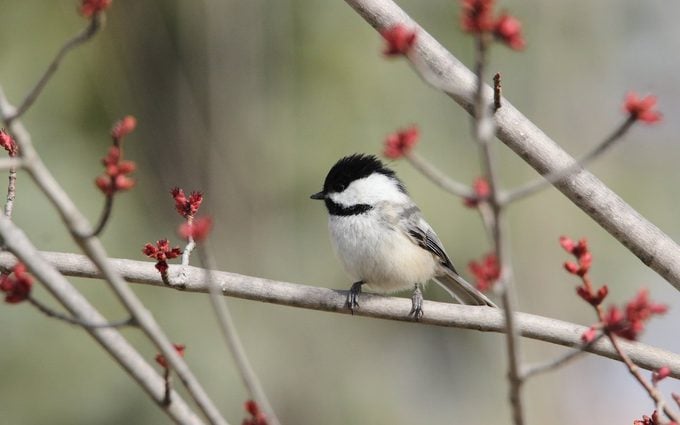
Black-capped chickadees are found at feeders throughout much of the continent, from Alaska and Canada to the mountains of New Mexico and Tennessee.
You won’t want to miss these incredibly cute chickadee pictures.
Carolina Chickadee
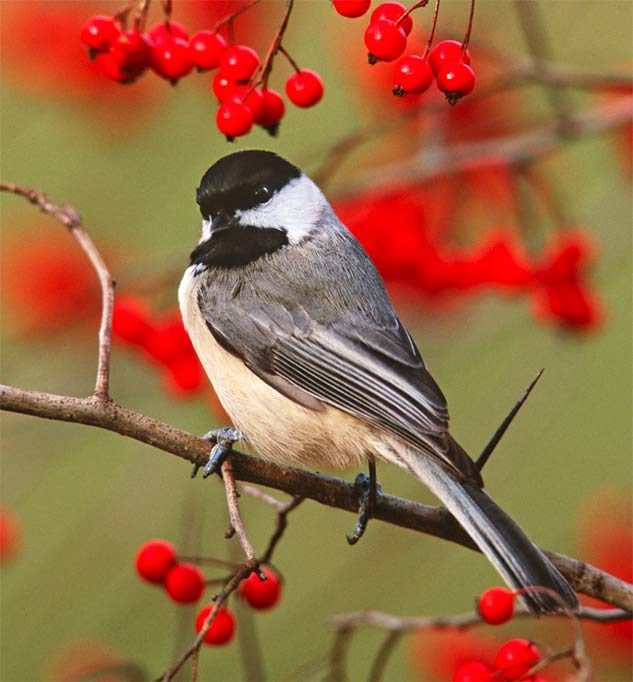
If folks around you are speaking with a southern drawl, chances are you’re in Carolina chickadee territory, in the Southeast, Deep South and lower Midwest. The Carolina chickadee’s geographic range overlaps the black-capped. Listen and look for differences. Its chick-a-dee-dee call is higher and faster than the black-capped. Also, its white cheek darkens to pale gray toward the nape, while the black-capped’s is completely white, with more white on its wing feathers.
Nuthatch vs chickadee: Here’s how to tell the difference.
Mountain and Chestnut-Backed Chickadees
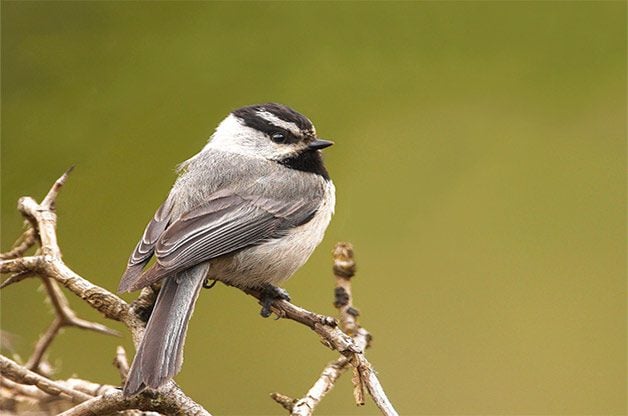
If you notice a chickadee with a white stripe on its head, it’s probably a mountain chickadee. These little birds forage in high coniferous Western forests, from Canada to near the Rio Grande. They nest in dead aspens because the soft wood is easy to excavate. Like all other chickadees, these birds stash food away for winter, caching nuts and seeds. Their call is distinguished by its slight lisp or buzz.
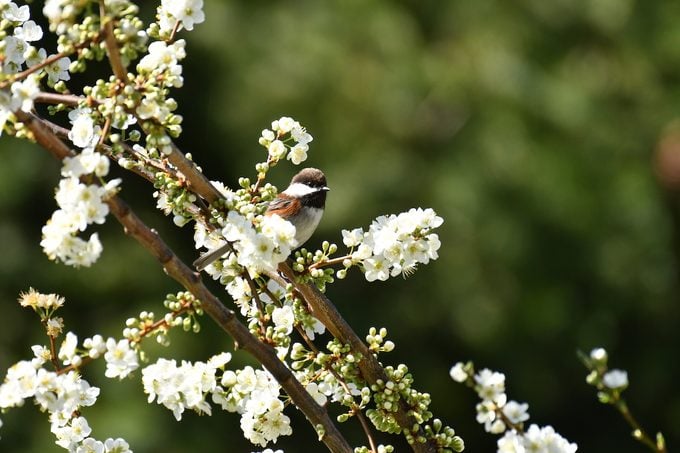
In the Northwest and along the Pacific Coast, you’ll find chestnut-backed chickadees at home in cities and towns as well as dense evergreen forests. The chick-a-dee call of this species is higher and thinner than the others, almost squeaky and with fewer dees.
Learn about western birds and their eastern counterparts.
Boreal, Mexican and Gray-Headed Chickadees
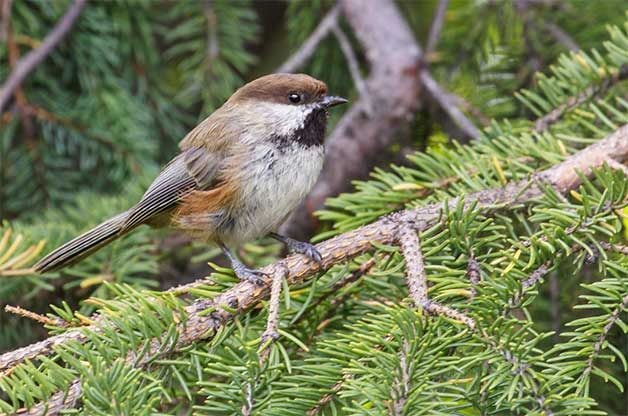
Black-capped, Carolina, mountain and chestnut-backed are the species you’re most likely to see in the U.S. But there are three others to cross off of your birding bucket list: boreal, Mexican and gray-headed chickadees. The boreal forests of Canada, Alaska and edges of the northeastern states are home to chickadees of the same name, a brown-capped bird with a slow, scratchy chick-a-dee call.
In contrast, you’ll have to head far south to the pine forests of the Chiricahua Mountains in Arizona and the Animas Mountains in New Mexico, which are the only places in the U.S. to see the Mexican chickadee’s big black bib and hear its hoarse chick-a-dee.
The rarest of all seven U.S. species is the gray-headed chickadee. Unless there’s a polar bear reading over your shoulder, you’re probably not in this bird’s territory. It lives in such an inaccessible part of the Arctic Circle in Alaska that ornithologists still don’t know much about it. These birds roam stunted balsam poplars and spruces and sings shick-a-day, its own version of the usual song.
Chickadee Song
All types of chickadees call a version of their own name. The call varies in pitch, speed and clarity depending on the species, but the easiest version to learn to recognize is that of the black-capped chickadee with its chick-a-dee-dee-dee call.
Most chickadees, the black-capped included, are talkative, with a whole repertoire of high, wheezy notes in addition to the trademark call. In spring, black-cappeds sing a loud two- to three-note fee-bee mating call. A super high-pitched seeee is a warning that there is a predator around. All chickadees within hearing distance freezes upon hearing it. That watchfulness may contribute to the chickadee’s surprisingly long life span—about 10 years!
Bird songs provided by the Cornell Lab of Ornithology.
What Do Chickadees Eat?
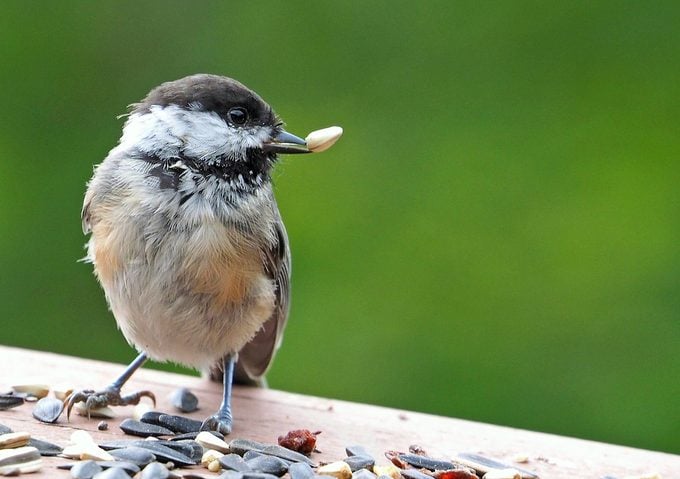
Chickadees are always on the move, picking off insects of any stage—eggs, larvae, pupae, adults—from leaves and branches. Pairs remain together year-round. From fall through early spring, the birds form small roaming flocks with titmice, nuthatches, warblers, brown creepers, kinglets and the occasional woodpecker.
All species can be seen within their respective range throughout the year. Although they visit backyard bird feeders less often in spring and summer, when insects are at their peak. However, chickadees lay as many as 10 eggs per year, and that’s a lot of mouths to feed. If a chickadee has a hungry spring brood nearby, it will become a regular at your seed feeder.
At the feeder, chickadees will eat sunflower seeds, but peanuts and other chopped nuts are truly irresistible. High-fat suet and peanut butter are also popular. Grab-and-go is their typical dining style, but they’ll soon be back for more.
Where Do Chickadees Nest?
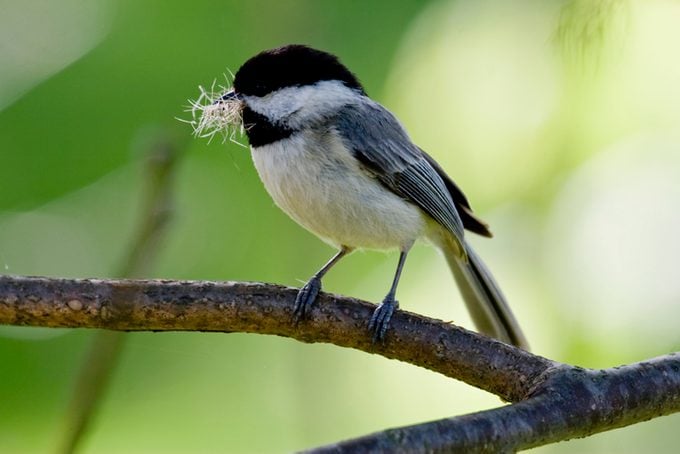
To attract the chickadee birds of your area to your backyard, set up a nest box. These endearing birds usually nest surprisingly low, like in old stumps or holes 4 to 15 feet off the ground. Mount the nest box on a tree trunk about 6 feet high for a clear view of the activity. Welcome your new neighbors with soft nesting material they can use to construct a deep nest. And be on the lookout for baby chickadees at your feeders!
